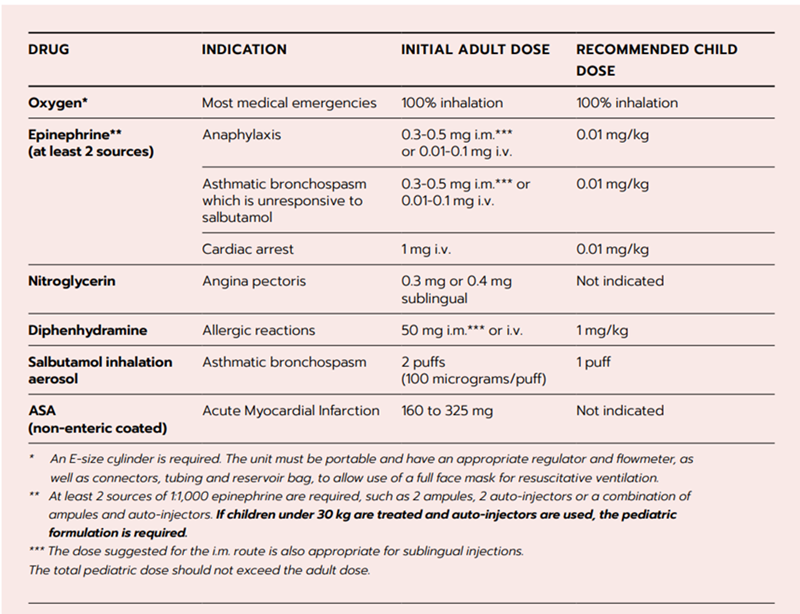Do dental staff need to be trained in CPR?
All dentists and clinical staff must have the training and ability to perform basic life support (BLS) techniques. It is strongly recommended that all dentists maintain current BLS certification (CPR Level HCP), and that all dental offices are equipped with an automated external defibrillator (AED).
All dentists providing sedation must, as a minimum, maintain current BLS certification (CPR Level HCP), which must include a hands-on component. Please refer to that table for specific requirements for each modality.
Currently, in-person training is available in most jurisdictions. If in-person training is not available in your area please see below.
It is strongly recommended that all dental offices are equipped with an AED.
For facilities that hold a Type A permit for Parental Conscious Sedation, a Deep Sedation and General Anesthesia facility permit as well as visiting providers who are authorized to perform Parenteral Moderate Sedation or Deep Sedation and General Anesthesia, a defibrillator is required (either an automated external defibrillator [AED] or one with synchronous cardioversion capabilities).
For more detailed information, please refer to the College Standard of Practice on the use of Sedation and General Anesthesia in Dental Practice.
Yes. The College has approved multiple Category 1 courses on medical emergency preparedness by various presenters.
The College defines “current” as within 2 years.
Six basic drugs must be included in every dental office’s emergency kit:
- Oxygen
- Epinephrine
- Nitroglycerine
- Diphenhydramine
- Salbutamol inhalation
- ASA (non-enteric coated)
These emergency drugs must have current expiry dates, be organized in labelled trays or bags and be readily identifiable.
Here are the six basic drugs, indications for use and their recommended dosages:

- In response to the opioid crisis, the College is recommending all dental offices carry naloxone and receive training on how to use it. Naloxone nasal spray or the intermuscular injection would be appropriate for most dental offices.
- Dental offices and visiting dentists that have a permit or authorization to administer deep sedation or general anesthesia must carry parenteral naloxone as part of their sedation emergency kit.
- Dental offices performing sedation or general anesthesia have additional medication requirements. Refer to the Sedation Standard for the specific requirements listed under each modality.
An E-size cylinder is required. The unit must be portable and have an appropriate regulator and flowmeter, as well as connectors, tubing and reservoir bag, to allow use of a full face mask for resuscitative ventilation.
All dentists and dental office staff must be prepared to recognize and treat adverse responses using appropriate emergency equipment and appropriate and current drugs when necessary. The College recommends your office have an emergency protocol. All office staff should be aware of this protocol and the procedures to follow when a medical emergency arises. Review the protocol at staff meetings so everyone is clear about who does what when a medical emergency occurs.
Dentists and staff are advised to check with the WSIB and/or the course providers, such as the Red Cross or Heart and Stroke to determine if a grace period has been provided.
Where feasible, continue to take advantage of the grace periods provided to defer in-person training, if suitable training is not available in your area. Where training is required, and you have internet access, please utilize Blended Learning options for BLS or Interim Training Courses for BLS, ACLS & PALS for the cognitive portion of courses.
WSIB will accept the Online Portion of the blended Training Program as a valid interim certificate during the social distancing protocols. When permissible by municipal, provincial, and federal legislation or regulation, obtain the second part for Skills for Interim Training/Interim Self-Directed Learning or, if available, in-classroom courses in alignment with In-Person Training and mandatory guidelines from Public Health and other governing authorities.
As PPE recommendations continue to change, dentists and staff should continue to follow the most-up-to-date recommendations from the RCDSO.
Rapid initiation of chest compressions is critical for successful resuscitation. Reduce provider exposure to COVID-19 by donning appropriate PPE, having appropriate ventilation in the operatory (ex HEPA filter) and limiting personnel in the operatory.
For the provision of CPR for patients with suspected or confirmed COVID-19 infection, all dentists and staff should wear a respirator (ex. N95) along with other PPE (gown, gloves, and eye protection) when performing the components of resuscitation that are aerosol generating, which include but are not limited to: chest compressions, defibrillation, bag-mask ventilation, intubation and positive-pressure ventilation.
In the event that the initial responders are not already wearing appropriate PPE, they should immediately don it and then begin CPR. Consider having a respirator (the type most commonly worn), eye protection and other appropriate PPE as part of your emergency set-up.
For more information, please refer to the following guidance provided from the 2022 Interim Guidance for Basic and Advanced Life Support in Adults, Children, and Neonates With Suspected or Confirmed COVID-19 published April in 2022.
2022 Interim Guidance to Health Care Providers for Basic and Advanced Cardiac Life Support in Adults, Children, and Neonates With Suspected or Confirmed COVID-19: From the Emergency Cardiovascular Care Committee and Get With The Guidelines-Resuscitation Adult and Pediatric Task Forces of the American Heart Association in Collaboration With the American Academy of Pediatrics, American Association for Respiratory Care, the Society of Critical Care Anesthesiologists, and American Society of Anesthesiologists (ahajournals.org)